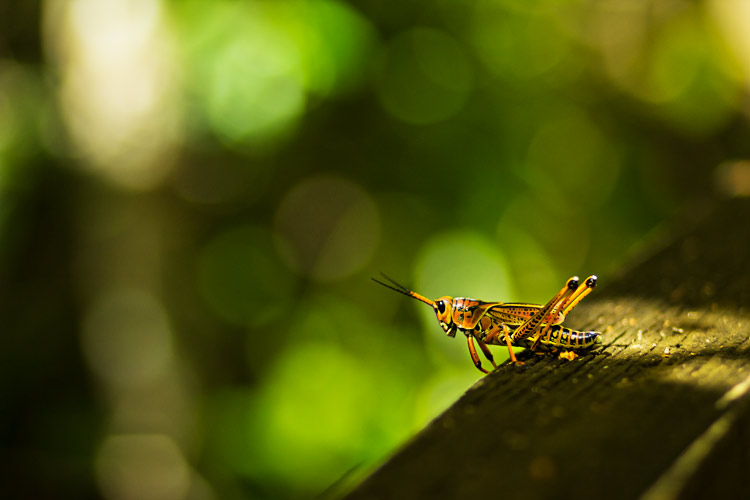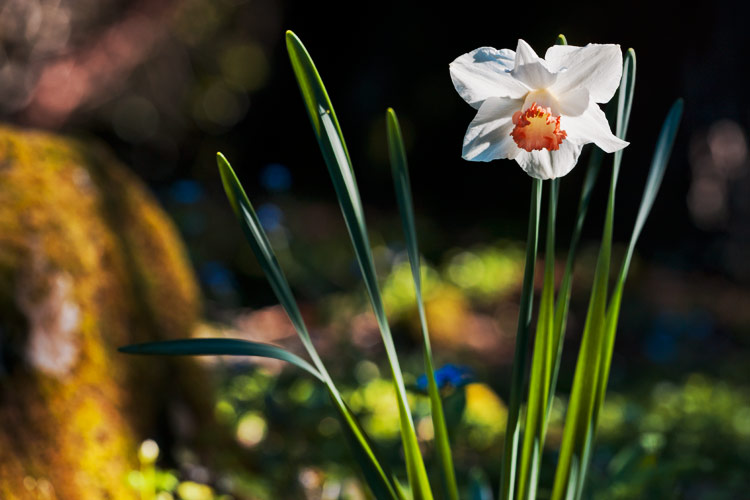We may earn a commission when you purchase through affiliate links. Learn more.
Boke translates to blur in Japanese, but the meaning of bokeh in the world of modern photography is a little more complex and nuanced. To simplify things, bokeh as a concept refers to the parts of a photo which aren’t in focus, but the current popular usage of the term more specifically refers to the artistic and aesthetic properties of the blurred, out of focus areas in a photo and how these out of focus areas are depicted in images in a smooth, circular way with areas of contrast and highlights blending gently together.
Since camera lenses differ pretty widely in how they’re constructed, certain lenses render out of focus areas better than others. A lens’s iris diaphragm opens and closes using blades that are arranged to form a circular shape, which controls the size of the aperture and how much light enters the lens. A greater number of aperture blades, especially curved blades rather than straight, results in a more circular iris. This is one factor which can help result in gently blurred out of focus light points that look visually appealing.
Not all lenses produce attractive bokeh all the time! Many new photographers see the smooth, creamy out of focus areas in photos taken by their favorite photographers and wonder why they’re not able to capture similar images with their own camera. Often, the issue is that the kit lenses which come with most DSLR & mirrorless cameras don’t have an aperture that can be opened wide enough to create a shallow depth of field in normal circumstances that’s often needed to create artistically pleasing bokeh. Even with kit lenses though, there are techniques that can improve your chances to producing good looking bokeh, such as getting very close to your subject and leaving lots of space between your subject and a background with good contrast and highlights, putting the background beyond the field of focus.
Aesthetically pleasing, good bokeh can be defined as having out of focus areas of light rendered as smooth and soft, helping to draw attention to the subject in focus.

How to Capture Great Bokeh:
Use a Fast Lens & Wide Aperture to Achieve a Shallow Depth of FieldFast lenses like the Canon EF 50mm f/1.8 STM Lens and Nikon 35mm f/1.4G AF-S FX Lens allow plenty of light in and enable a very shallow depth of field. Using a wide aperture helps to keep your lens iris diaphragm as circular as possible, which helps to render the out of focus highlight areas as soft, round areas of color that blend gently together in a way that looks almost painted.
Get Close to Your Subject
In order for the lens to render bokeh that’s attractive and soft, we need to achieve a shallow depth of field. You can achieve this shallow depth of field by getting as close to your subject as you can while using a fast aperture.
Position your Subject in front of a Background with Good Contrast
Bokeh is all about how out of focus areas of varying color, contrast, and highlights are rendered in an aesthetically pleasing way — if your subject is positioned in front of a solid colored background with even lighting, there won’t be any light points present that are needed to create bokeh in an image. A forest scene like the one above where light flickers through the trees and numerous colors and shadows make for a background filled with contrast makes for a perfect example of the sort of scene that can help produce great bokeh.
Try to Increase the Distance Between Your Subject and the Background
While shooting with your lens wide open (that means using the widest aperture/the lowest f-stop number possible) helps to capture a shallow depth of field, we want to keep the background as far away from the field of focus as possible. Keeping the background far away from the subject helps to isolate the subject and improves the chances of the light points in the background being rendered as soft, out of focus areas of bokeh.

